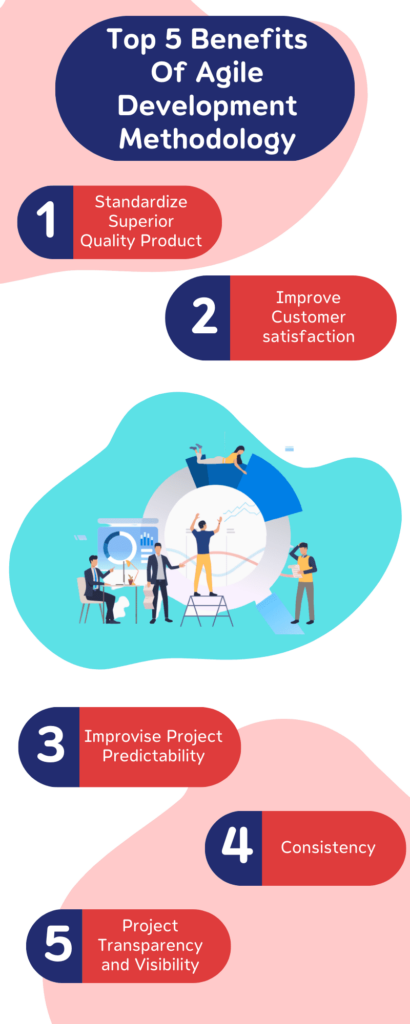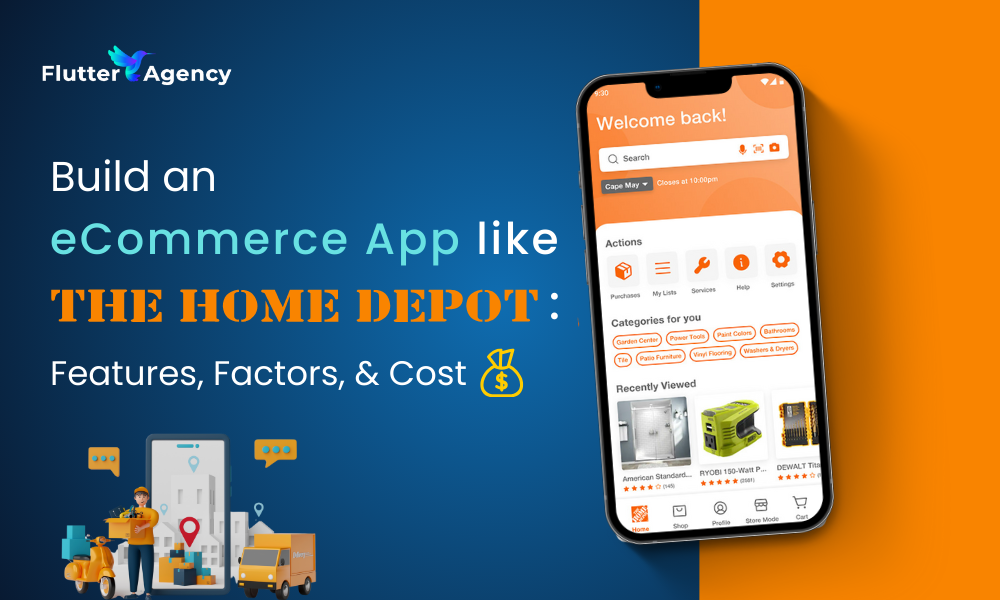Agile Methodology In Custom Application Development
Organizations worldwide embrace the latest ways of tending the business to the custom business needs and demands. The assortment of strategies is used to foster the custom enterprise software to the solutions to meet particular business requirements.
Several options are now available for the organizations, such as off-the-shelf applications or custom app development and different methods to promote the application. However, the pre-built apps have a comprehensive crowd, which is excellent for people as it is simple to buy and utilize. Custom agile development services are a unique and productive way for an organization to develop what they need for their business.
Agile development: Overview
Agile development is the term that is used to define iterative software development. An iterative software development will lessen the DevOps lifecycle by completing the work in shorter increments, known as sprints. Agile development is frequently contrasted with waterfall or traditional development, which plans the great projects up front and will complete them as per the plan.
It delivers the production quality code that each sprint needs the Agile development team to account for the accelerated pace. All it needs is the coding, testing, and quality verification done on every sprint. Hence, agile is the approach to software development that seeks a continuous delivery of work on the software, which is created in rapid iterations.
Benefits of Agile Development Methodology

1. Standardize Superior Quality Product
Agile methodology has delivered outstanding results that add high-quality software, and applications are developed at a meager cost. An agile software development team should have strived to create all the product’s features simultaneously. And utilize the agile methods compared to the traditional project management approach as it divides the project into manageable chunks and will execute them one by one with all the phases of development.
So, using the Agile methodology permits you to undertake the testing after each iteration and get feedback from the product owner. This feedback is integrated into the development needs. This strategy will assist an agile team in identifying the expectation mismatches early in the development procedure and finding the errors promptly. Hence, an agile project management methodology will improve product quality.
2. Improve Customer Satisfaction
Customer satisfaction is the first agile principle. This development aims to satisfy customers and continuously deliver valuable software solutions. A project must meet a customer to be successful, as they have yet to accomplish any business goal, regardless of how good the coding is. Hence, each sprint should add value.
The internal stakeholders will utilize the final product or service, which is prioritized over the process in agile. Hence, the process becomes smooth and easy if you consider the feedback. Therefore, consumer feedback is included in the process to enhance quality constantly.
3. Improvise Project Predictability
The predictability of projects will get simple as it shortens the software development cycle. Sprints are the short intervals of time in which the agile team operates. An agile method function will work on the principle of significantly lesser sprints. A predicated length enables all project managers to monitor the team’s performance quickly and will allocate resources. Hence, you can make the estimation much easier and opt for analytics and prediction.
4. Consistency
When you are working in Agile teams, there is a daily meeting to understand the project’s timeline and how to alter the plan to achieve it. The team will gather together and retrospect the entire project created to know what has worked well and what needs improvement. The objective is to establish a safe environment in which mistakes are identified and avoided in the future.
5. Project Transparency and Visibility
The agile approach offers the clients unique opportunities to be a part of the project, from feature prioritization to the iteration strategic decision, making meetings the systematic software development that incorporates the new features and functionalities. Hence, the clients must recognize as they are viewing the work in progress.
Also, Read This Post:
E-Commerce Mobile App Development Trends for 2021
Why Select Agile Development?
- Perfect for unpredictable and uncertain environments
- Open to change and incorporate the changes throughout a development process
- Flexible with project stages that are repeated during the lifecycle allows fast adaptation to changes.
- Feedback is received early.
- Frequent releases and feedback promote the learning and refinement
- Its focus on delivering the value
- A self-organized team promotes increased collaboration.
- This process needs significantly less documentation and more human interaction.
Principles of Agile Development Process
1. Communication and Collaboration
During an agile development process, we emphasize collaboration and communication via the teams that work together to provide the best outcomes and value the creativity of development. Hence, the team develops an agile mindset and selects the best tools and processes to achieve superior results.
2. Focus on Project Delivery
Our team emphasizes creating value by working on the deliverables, avoiding a complicated and entangled process to reach the deliverables.
3. Customer and User Feedback
Customer satisfaction and high-quality products are the team’s priorities. Hence, these are achieved by collaborating early and often adapting the changes as per the feedback. Therefore, change is inevitable, and our team will continuously modify the plan throughout an agile development cycle, from the research to the final product launch.
Development Process of Custom Development With Agile Methodology
Website creation, software building, or mobile application development are complicated phases. Wrong decisions taken in any stage of development will impact the quality of your project and your entire business. Therefore, the development of custom mobile applications needs immense hard work, dedication, and rich expertise.
Doing in-depth research on the market is necessary, and customer demand will ultimately add value to your business. Hence, let’s start with an analysis of every stage of the custom development process.
Step 1: Ideation
Coming up with innovative ideas is very challenging as new technological innovations are emerging at a very rapid pace. It leads product managers to think globally to create a unique software product that gives something special, which is considered an effective technique in the IT environment. All team members must contribute their ideas during the meetings and discussions. Therefore, planning the product idea will make the prime requirements of the project, and a roadmap will influence the whole development process.
Step 2: Designing
After planning, the next phase is to design a product’s technical architecture. In this phase, the team gives the business specification to the technical team, creates a product’s architecture, and makes workflow diagrams and tech stack. Therefore, it will simply conceptualize the product.
Step 3: Development
The most crucial stage in the software development process is development, where developers start to do coding as per business requirements. Every team member will follow the Agile approach or an MVP prototype described in the SOW to build robust, scalable, and efficient software. After the development phase, the MVP product is first released to preview a product.
Step 4: Testing
To check whether the software program is working efficiently, you must do the testing to ignore the product’s bugs and failures. Testers perform in-depth testing to track and fix the bugs. Therefore, we release products to a small group of beta testers or utilize UX tools to track user behavior with your product.
During this stage, QA engineers will test and code quality by using various frameworks and testing methods to check any bugs in the system. Testers report the test cases and will inform any developers of bugs to developers to fix them. Therefore, it helps them to create an error-free software product.
Sep 5: Launch
Once you are done with development, it’s time to launch your software in the market so that a target audience can access it. Therefore, the development team must now be confident about the product’s usability, functionality, and stability. After getting the feedback on the Alpha release, the group moves towards a beta release phase. The final product will get consumers’ feedback and make the necessary changes according to that.
Also, Read This Post:
A Complete Guide to Enterprise Mobile App Development Process
Conclusion
While concentrating on success with the improved business process and dedicated team of experts, you must focus on every business element that needs your attention. Selecting customized app development is preferable for startups and enterprises looking to scale their business and product.
Frequently Asked Questions (FAQs)
1. How is custom development better than low code development?
Creating the software using a low development approach is very limited and may not be achieved as many apps are complicated. On the contrary, creating custom apps allows businesses to use a comprehensive software framework and customize the solutions to different issues and essential needs.
2. What is custom application software?
Custom app development is designing software apps for a particular group of users within the organization. Custom software is developed to address any specific needs within the organization as opposed to more traditional and standard software used by the masses.
3. How many frameworks are in Agile development?
Scrum is the most common Agile framework. Besides the Dynamic Systems development method (DSDM), Crystal and Feature-Driven Development (FDD).
Contemporary ventures
Recent blog
ready to get started?
Fill out the form below and we will be in touch soon!
"*" indicates required fields








